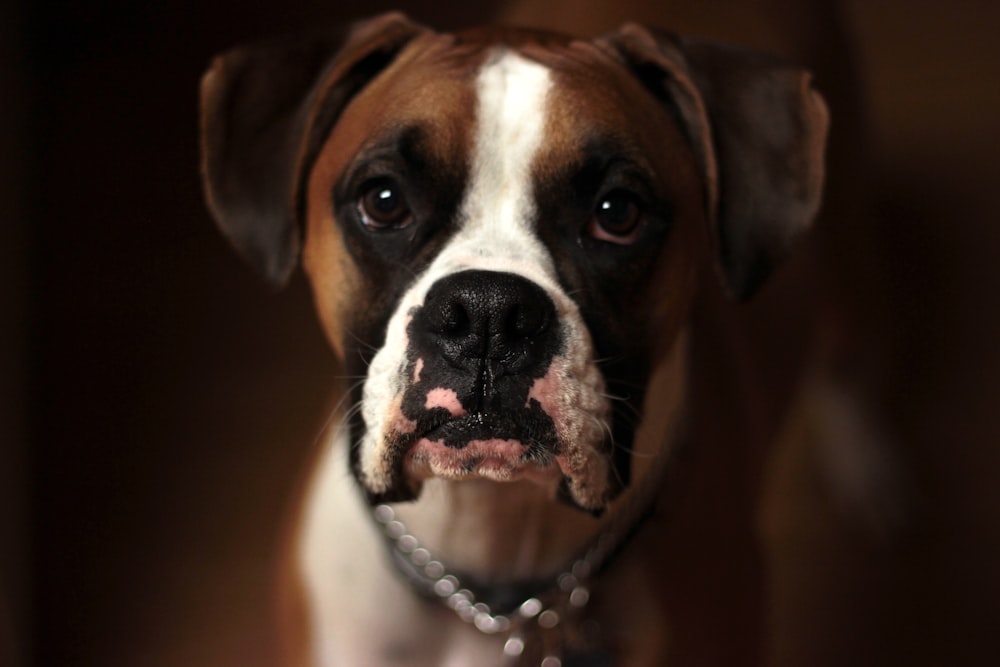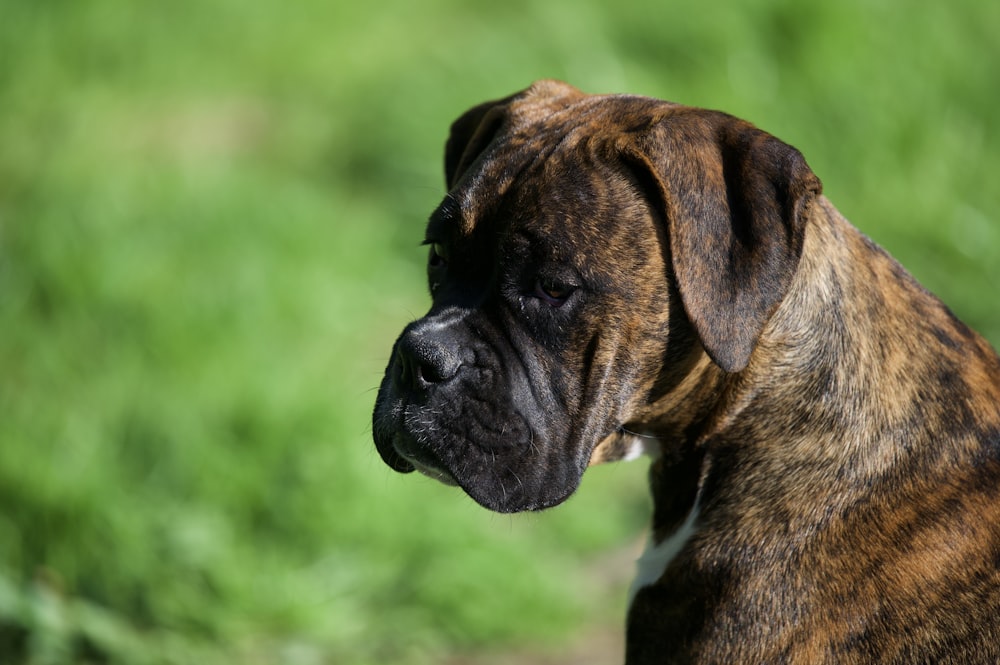The Boxer Dog was created in Germany from mastiff-like dogs and bulldogs from Great Britain. The mastiffs hunted bear, wild boar, and deer, seizing and holding the prey until hunters arrived. Eventually, in the town of Brabant, breeders began to favor smaller, faster versions of these dogs to use as guard dogs, which became today’s Boxer. The Boxer breed was introduced to other parts of Europe in the late 19th century and then to the United States in the early 20th century. During World War I, Boxers were assigned military jobs such as pack animals, messenger dogs, and guard dogs. Soldiers brought Boxers home from the war, spreading their popularity worldwide.
Initially recognized by the American Kennel Club in 1904, today, the Boxer is ranked number 11 in popularity of the 193 AKC-recognized breeds and categorized in the Working Group.
Characteristics Of The Boxer
What characteristics define the Boxer dog? Read on to discover what physical attributes and personality traits make the Boxer such a unique breed.
Boxer Dog Appearance

We can easily identify Boxers by their large, muscular body, square heads, and beautiful, short coat. A boxy muzzle, alert stance, and square frame characterize this breed, often sporting white markings on the eyes, chest, and legs. Boxers not only have white markings but also sport a mischievous-looking black face mask.
The American Kennel Club accepts two coat colors: brindle and fawn. Boxers may also have a white coat, but this is not part of the breed standard. The smooth coat is short and lies close to the skin.
Boxer dogs have a solid and imposing build. Males weigh between 65 and 80 lbs and stand 23 to 25 inches high at the withers (top of the shoulder). Females are slightly smaller, weighing 50 to 65 lbs and standing 22 to 24 inches tall.
Temperament and Personality of a Boxer Dog
Boxers are guard dogs at heart; they spend much of their day alert and watchful. They are confident and dignified yet turn into complete clowns around their family. This breed is even incredibly gentle with children and friendly with strangers, though they can exhibit aggression in defense of their families.
Boxers’ intelligence and energy level mean they are a breed that you need to keep physically and mentally busy.
Boxers have a life expectancy of 10-12 years.

Caring For A Boxer Dog
Understanding and maintaining a Boxer’s particular needs will lead to a longer, healthier life for your dog and a more enjoyable partnership for both dog and owner. Read on to learn more about the nutrition, exercise, training, and health requirements of a thriving Boxer dog to ascertain whether this is the right breed for you.
Nutrition
Boxers thrive on high-quality dog food specially formulated for large breeds with high energy levels. Whether manually or commercially prepared, you should appropriately tailor your dog’s diet based on age (puppy, senior, etc) and activity level. Many dog foods have serving suggestions on their packaging. Also, you should monitor your dog’s food intake and body condition, as well as consult with your veterinarian. These are all simple ways to make sure your dog is receiving the nutrition he or she requires.
Exercise
Boxers are playful, energetic dogs, so if you are not prepared for a high-energy animal, this may not breed for you. Boxers enjoy plenty of exercise on a leash or in a fenced yard every day. Do not allow your Boxer to roam freely as they have a strong prey drive. Boxer dogs can participate in many canine competitions, including obedience and agility.
Training
The Boxer is an incredibly intelligent breed. They learn easily, respond quickly, and are eager to please, though their intelligence means they may get bored with repetition. Training should be fun and variable to keep their interest. Learn more about easily-trained breeds here.
Like all dogs, puppyhood training and socialization are essential to a well-rounded pup. Boxers have a tendency to still behave like puppies for far longer than the average breed, keeping their youthful exuberance for up to 3 years. Puppy classes are an excellent way to train and socialize a new puppy from an early age. At a minimum, your Boxer should learn basic obedience commands such as sit, stay, and come. Training a Boxer dog works best with a focus on positive reinforcement. Consistent training and patience are essential to successfully raising a well-rounded Boxer.
Due to their strong loyalty and drive for companionship, Boxers left alone for long periods can resort to undesirable and even destructive behaviors. You can alleviate some of these behaviors by providing access to puzzles and interactive toys. Boxers are family dogs to their core and should never be left to live in a yard or chained but rather inside a home with their people. They are also prone to extreme heat or cold due to their short coats, so the weather should always be taken into account.

Health
Boxers are generally healthy but may be prone to bloat, hip dysplasia, heart issues like cardiomyopathy, thyroid deficiency, and cancer.
Bloat is a common, but life-threatening, health issue that affects most larger, deep-chested dog breeds like the Boxers. Know the symptoms and causes of bloat to identify the problem and quickly seek medical attention.
Hip dysplasia is an inherited joint condition that may be assisted with the use of joint supplements. The easiest way to diagnose the problem is via a visit to the vet and x-rays.
Cardiomyopathy is a disease of the heart muscle that leads to an enlarged heart. This disease may result in heart failure. Treatments include oxygen, fluid therapy, and medication to improve heart function.
Grooming
This breed’s sleek, short coat requires minimal grooming. Boxers do shed, so we recommend weekly brushing with a grooming mitt or curry comb. Frequent bathing is unnecessary, and dog odor is minimal. Clean your Boxer dogs’ ears gently every few days, checking for redness or odors.

